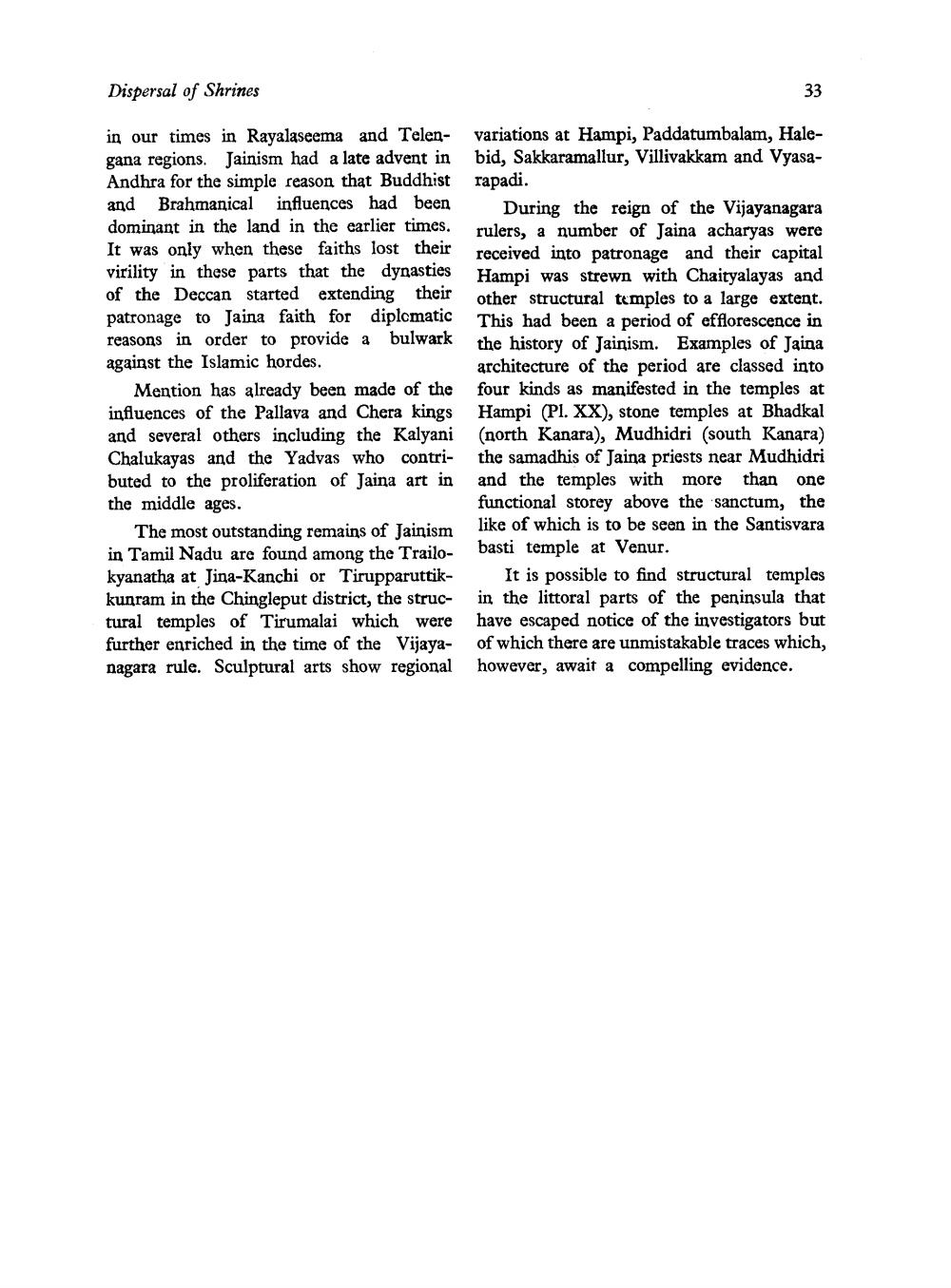________________
Dispersal of Shrines
in our times in Rayalaseema and Telen- gana regions. Jainism had a late advent in Andhra for the simple reason that Buddhist and Brahmanical influences had been dominant in the land in the earlier times. It was only when these faiths lost their virility in these parts that the dynasties of the Deccan started extending their
reasons in order to provide a bulwark against the Islamic hordes.
Mention has already been made of the influences of the Pallava and Chera kings and several others including the Kalyani Chalukayas and the Yadyas who contri- buted to the proliferation of Jaina art in the middle ages.
The most outstanding remains of Jainism in Tamil Nadu are found among the Trailo- kyanatha at Jina-Kanchi or Tirupparuttikkunram in the Chingleput district, the struc- tural temples of Tirumalai which were further enriched in the time of the Vijaya- nagara rule. Sculptural arts show regional
variations at Hampi, Paddatumbalam, Halebid, Sakkaramallur, Villivakkam and Vyasarapadi.
During the reign of the Vijayanagara rulers, a number of Jaina acharyas were received into patronage and their capital Hampi was strewn with Chairyalayas and other structural temples to a large extent. This had been a period of efflorescence in the history of Jainism. Examples of Jaina architecture of the period are classed into four kinds as manifested in the temples at Hampi (Pl. XX), stone temples at Bhadkal (north Kanara), Mudhidri (south Kanara) the samadhis of Jaina priests near Mudhidri and the temples with more than one functional storey above the sanctum, the like of which is to be seen in the Santisvara basti temple at Venur.
It is possible to find structural temples in the littoral parts of the peninsula that have escaped notice of the investigators but of which there are unmistakable traces which, however, await a compelling evidence.




